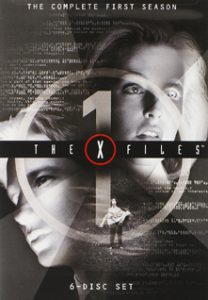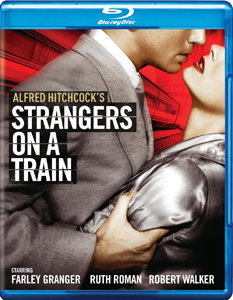The Alfred Hitchcock classic “Strangers on a Train” (1951) starts with a hooky premise, then keeps a viewer engaged with twists and turns. It begins as a simple, relatable illustration of encountering someone annoying on a train.
Amateur tennis star Guy (Farley Granger) – a nice fellow who can be taken advantage of — is approached by Bruno (Robert Walker, subtly portraying mild psychological instability), who proposes a double murder: Bruno will kill Guy’s wife if Guy kills Bruno’s father in exchange. That way neither will be suspected.
A good Guy
Working from a screenplay by noir novelist Raymond Chandler and Czenzi Ormonde (themselves working from Patricia Highsmith’s novel), Hitchcock makes it clear that audience surrogate Guy is good and wild card Bruno is bad. We don’t get the moral gray areas of something like “Match Point” (2005), but it’s still fascinating to think down different paths before Hitch leads us where he will.

“Strangers on a Train” (1951)
Director: Alfred Hitchcock
Writers: Raymond Chandler, Czenzi Ormonde (screenplay); Whitfield Cook (adaptation); Patricia Highsmith (novel)
Stars: Farley Granger, Robert Walker, Ruth Roman
“Strangers” shows how an odd and tense scenario can make innocent people act guilty. Part of this is because Guy’s wife Miriam (Laura Elliott) – who cheats on him but then doesn’t grant a divorce (which wasn’t easy to acquire in those days) – is so strangle-able. We can sympathize with Guy wanting her out of the way, and can’t blame him for giving some thought to Bruno’s offer.
It’s fascinating how Guy is hooked into this scenario without he himself taking any action. Rather, he’s stuck because of how things would look to the police. I worried that “Strangers” would be an uncomfortable tale of no one believing the innocent man, but fortunately it’s more than that.
It’s a relief when Bruno gets thrown a monkey wrench via an interesting situation with lookalikes. The director’s daughter Patricia plays a key role here as Babs, the sister of Guy’s new love interest.
Is ‘Match Point’ an homage?
If you’ve seen the 2005 Woody Allen masterpiece “Match Point,” “Strangers” plays like a counterpoint, a study of a good man caught in social and legal quandaries. “Match Point” is about a bad man – who actually does commit a murder – caught in a moral quandary. (Unlike Bruno, he has enough of a conscience to lose sleep.)
I wouldn’t be surprised if Allen was paying homage to “Strangers.” Both films are driven by turns in the narrative that make a viewer recalibrate what matters. Several motifs reappear, too. The protagonists are both tennis players, and both are obsessed with a piece of evidence (false in Hitchcock’s film, genuine in Allen’s) that could bury them.
In “Match Point,” the ring truly is pivotal, but in “Strangers” Guy’s personalized lighter is a maguffin. The director uses the item for what might be cheap suspense in a lesser film – Bruno drops it down a storm grate and frustratingly tries to reach it amid the tense final act. But by this time Hitch has assembled the pieces so nicely that we giggle at how he uses cinematic storytelling tools.

Iconic shots
“Strangers” is famous for a few shots that remain impressive nearly 75 years later. A murder is seen through the reflection in an eyeglass lens. As tennis spectators move their heads back and forth, the villain stares straight ahead.
Most impressive for a 1951 film is the gripping final fight on a sped-up carousel, with the plastic horse hooves nearly spearing the combatants. In an era of special-effects miniatures that often don’t hold up to scrutiny, the carousel looks believable enough. Similar to how we get wrapped up in Bruno reaching for the lighter, it doesn’t matter that the out-of-control carousel is cartoonish.
Hitchcock has us firmly hooked by this point, and it started back with Bruno’s pitch to Guy on the train; by doing preparatory work, a storyteller can have fun later.
I do like “Match Point” slightly more because it also works on that second level as a morality tale. But “Strangers on a Train” is a vintage reminder of how Hitchcock’s foundations are so sturdy that brand new plots and character studies can be built atop them.
RFMC’s Alfred Hitchcock series reviews works by the Master of Suspense, plus remakes and source material. Click here to visit our Hitchcock Zone.

